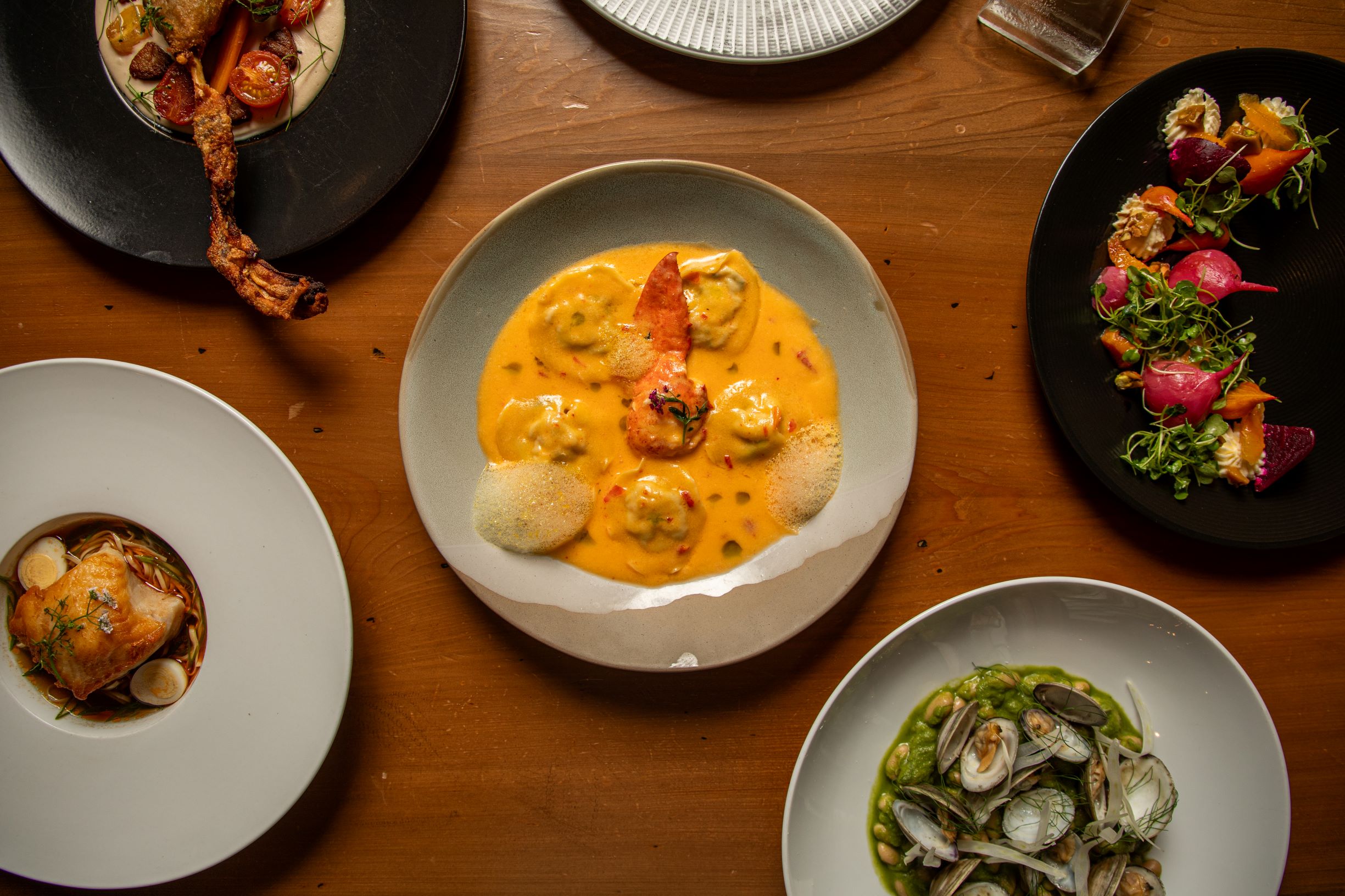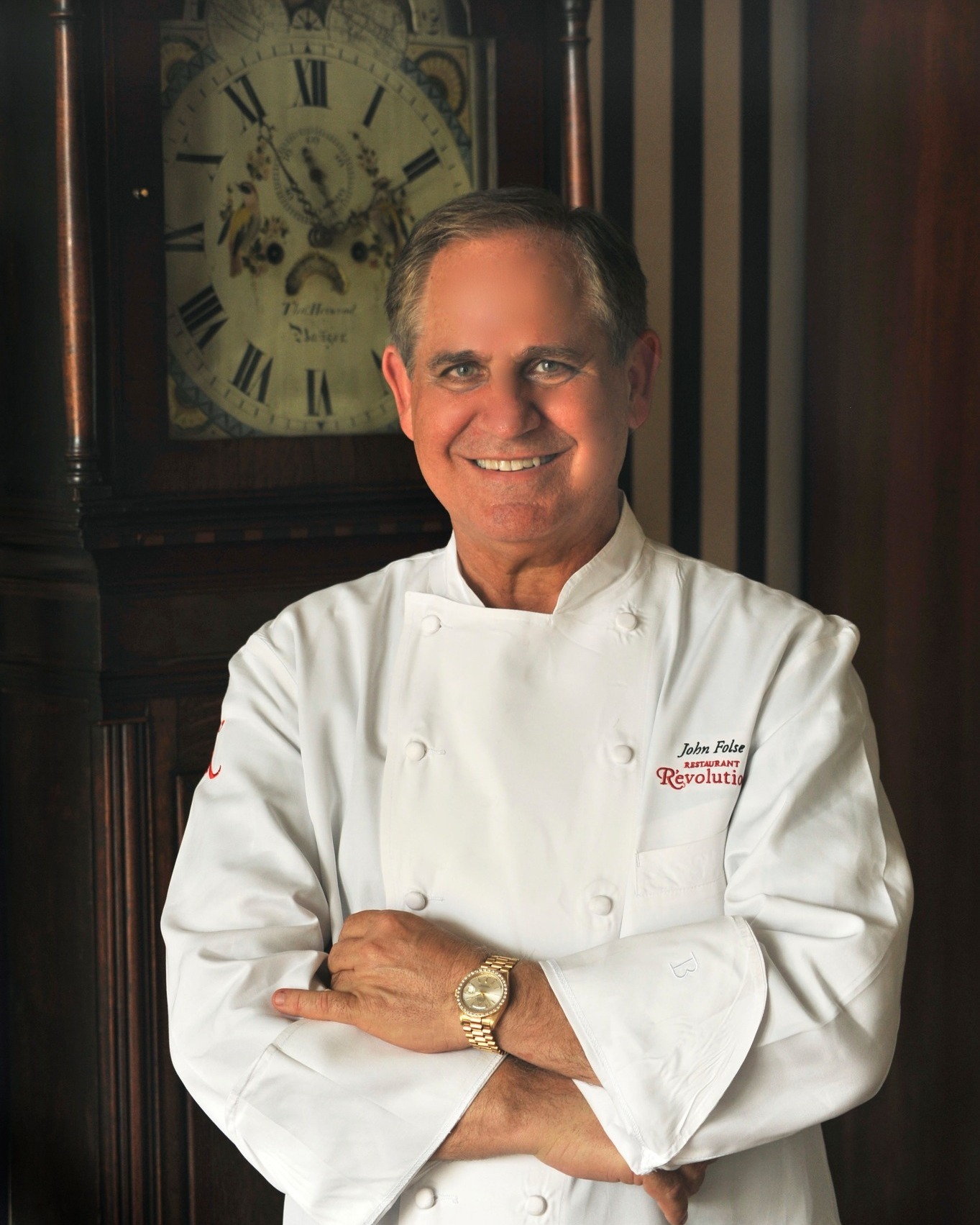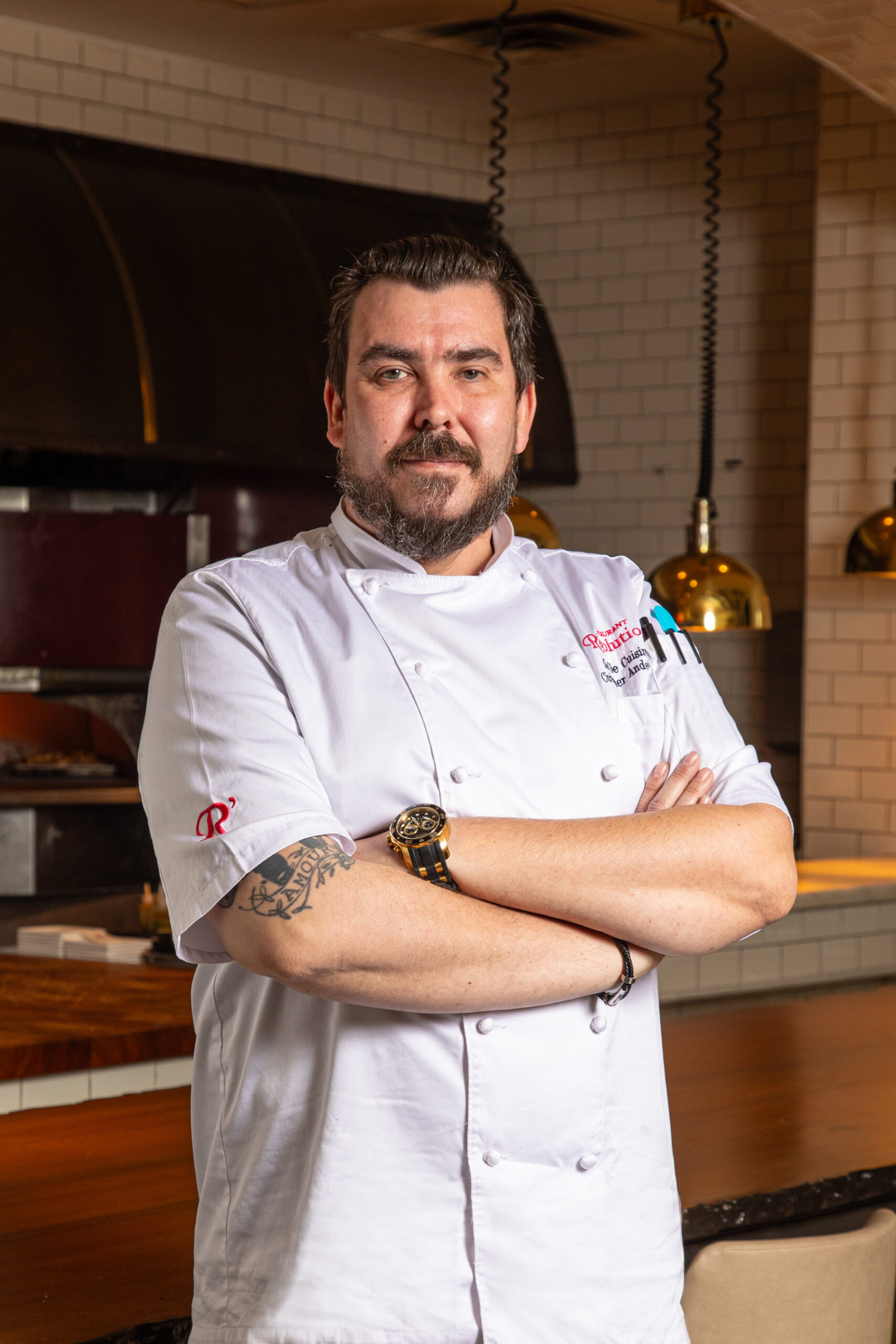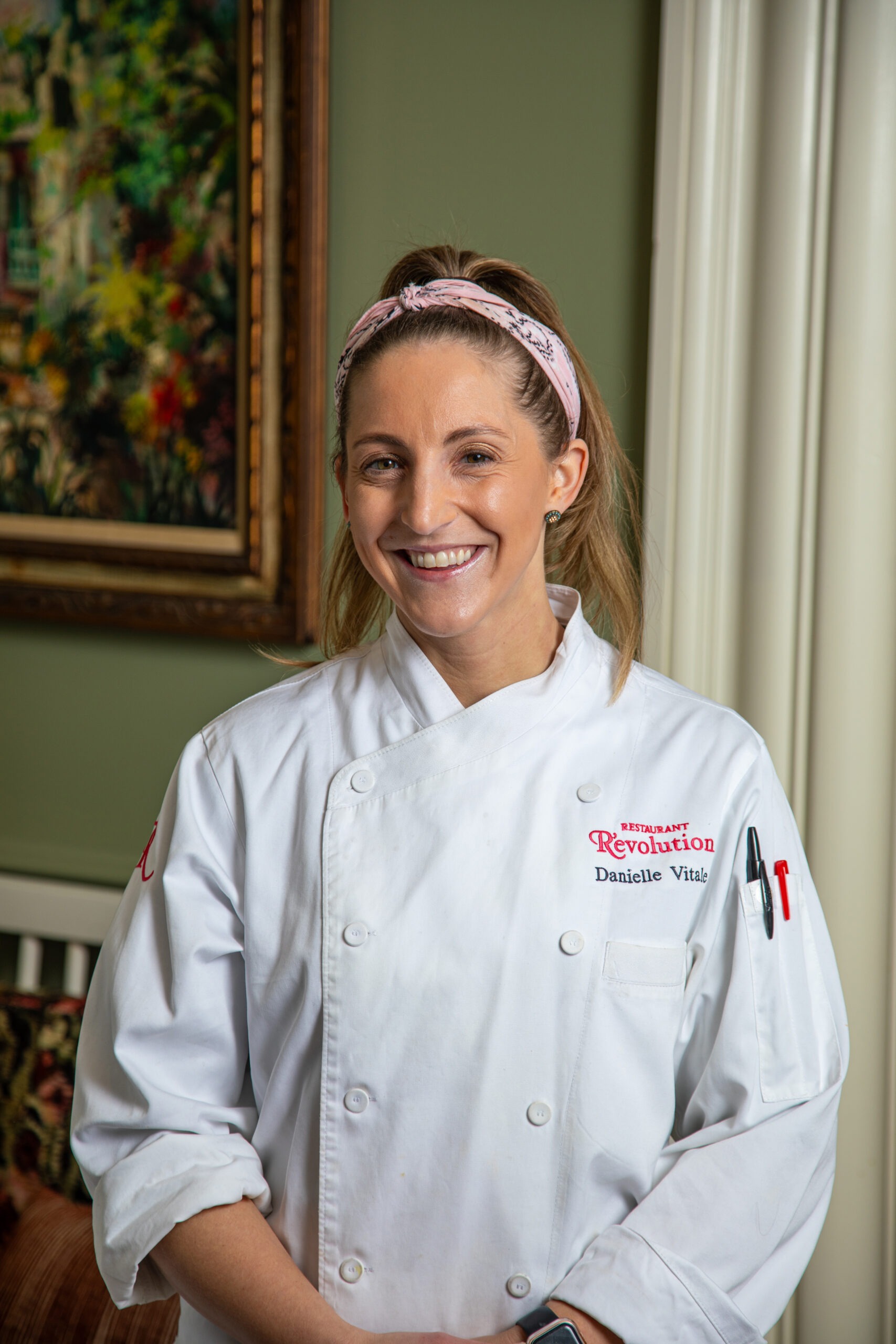About

Our Story
Take one city steeped in tradition and fortified with a tenacious spirit. Combine it with a cross-cultural fusion of food and flavors built on the culinary history of seven nations that contributed to its unique flavor and what do you get? Restaurant R’evolution, offering modern, imaginative reinterpretations of classic Cajun and Creole cuisine. Located in the heart of the French Quarter at Royal Sonesta New Orleans, Restaurant R’evolution is a favorite for locals and visitors alike, featuring award-winning cuisine set in an atmosphere offering a dining experience that’s beyond compare.
This partnership also delved into Louisiana history, exploring the significant culinary contributions of each of the seven primary nations that inhabited the state, bringing raw ingredients from their native countries and cross-pollinating with their gastronomic traditions. The result will be a fresh and contemporary translation of Cajun and Creole cuisine, using Louisiana’s raw ingredients and building upon the history and traditions that define New Orleans.

Chef John Folse, Executive Chef
Chef John Folse, born in St. James Parish in 1946, has spent his life and culinary career championing Louisiana cuisine and culture.
Growing up with the Mississippi River at his front door and the swamps out back, Chef Folse learned early on that the secrets of Cajun cooking lay in the unique ingredients of Louisiana’s swamp floor pantry.
Starting in the hotel business in Baton Rouge, Chef Folse discovered his passion for cooking while working in hotel management in Baton Rouge. Working closely with the hotel’s executive chef, he shared Cajun and Creole recipes like turtle soup, crawfish étouffée, and gumbo, while mastering classic European techniques. This mentorship inspired Folse to pursue his culinary dreams. In 1978, he opened Lafitte’s Landing in Donaldsonville as Executive Chef, launching a career that would span the globe.
With Lafitte’s Landing, Chef Folse introduced Cajun and Creole cuisine to international audiences, partnering with Hilton Hotels to take “a taste of Louisiana” to Japan, Beijing, Hong Kong, and Paris. In 1988, he made headlines by opening “Lafitte’s Landing East” in Moscow during the Reagan-Gorbachev Presidential Summit and became the first non-Italian chef to create the Vatican State Dinner. Recognized as “Louisiana’s Culinary Ambassador to the World,” Folse also established promotional restaurants in cities like London, Bogota, Taipei, and Seoul.
Chef Folse founded Chef John Folse & Company in the early 1990s, creating the only chef-owned USDA Manufacturing Plant, producing authentic Cajun and Creole products for global distribution. His influence extends through publishing, food manufacturing, and the Chef John Folse Culinary Institute at Nicholls State University, dedicated to preserving Louisiana’s culinary heritage.
Folse’s media presence amplified his mission. His award-winning PBS series, A Taste of Louisiana on WYES, introduced viewers to the state’s rich food culture, while Stirrin’ It Up on WAFB-TV continues to celebrate traditional Louisiana cooking.
In 2012, Folse opened the acclaimed Restaurant R’evolution in New Orleans in partnership with Sonesta International Hotels, followed by Folse Market at the Louis Armstrong New Orleans International Airport. At White Oak Estate & Gardens in Baton Rouge, Folse hosts events and produces his signature Still’Water Bourbon and Rum.
With over four decades of culinary excellence, Chef John Folse continues to inspire and share the vibrant flavors and spirit of Louisiana on the global stage.

Chris Anderson, Chef de Cuisine
Born and raised in Washington, North Carolina, Anderson developed a profound love for food from an early age. Growing up in the South, this affection for culinary arts became deeply ingrained in his way of life. Intrigued by the transformative power of food on the human soul, he pursued his passion by attending the International Culinary School at the Art Institute in North Carolina. During his time there, Anderson became a member of the competition team and achieved a silver medal at the American Culinary Federation (ACF) Junior Hot Foods Competition.
Upon graduating with a bachelor’s degree in culinary management, Anderson embarked on a journey to Europe to immerse himself in classical cooking and techniques. He spent a year in Lyon, France, where he lived and worked at the esteemed 2 Michelin Star restaurant Auberge de L’Ile, under the mentorship of Jean-Christophe Ansanay-Alex. Under Jean-Christophe’s guidance, Anderson learned the importance of listening—to people, to food, to moments, to emotions.
Upon returning to the United States, Anderson was determined to further refine his culinary craft. He sought opportunities to work with some of the most innovative chefs in the industry, individuals who not only pushed the boundaries of food but also redefined the dining experience. His quest led him to Chicago, where he spent the next three years honing his skills at renowned fine dining establishments across the region—Alinea, Moto, and L2O—before finding his true culinary home at Moto. It was at Moto that Anderson earned his own Michelin Star.
At Moto, working alongside Chef Richie Farina, Anderson gained invaluable management experience and cultivated a strong work ethic, propelling him from a passionate cook to a skilled chef.
Under Anderson’s leadership, the Restaruant R’evolution kitchen has reached new heights. He has instilled a culture of creativity, passion, and precision among the team. Dedicated to sourcing the finest local ingredients, Chef’s mastery of culinary techniques have resulted in dishes that not only tantalize the taste buds, but also tell the story of New Orleans tradition, and innovation.

Danielle Vitale, Executive Pastry Chef
Danielle Vitale is the creative force behind the pastries at Restaurant R’evolution, and The Royal Sonesta New Orleans. Vitale embarked on her culinary journey as a pastry cook at The Royal Sonesta eight years ago. Through her dedication, she has risen the ranks to become the Executive Pastry Chef.
From New Jersey, Vitale studied at Johnson & Wales University in Rhode Island where she honed her skills and nurtured her love for the art of pastry. She found her way to New Orleans in 2014.
As Executive Pastry Chef at Restaurant R’evolution and The Royal Sonesta New Orleans, Vitale’s creations are a true testament to her expertise and creativity. From delicate pastries to decadent confections, each creation bears Danielle’s signature touch while honoring the Restaurant R’evolution name.

Ashley Daniels, General Manager
Ashley Daniels is the dynamic General Manager of Restaruant R’evolution. Daniels provides each guest with warm service and hospitality. Her unique blend of experience, passion, and creativity supports each team member.
Daniels came to New Orleans via New Mexico over a decade ago. Her journey to the world of restaurants and hospitality took a serendipitous turn, guided by her eclectic background and diverse interests. With a background as a project engineer and a master’s degree in music, she embarked on a path that ultimately led her to the intersection of good food, good wine, and good people.
She discovered her passion during her college days when she worked in a restaurant part-time. The hustle and bustle of the kitchen, the camaraderie among the staff, and the joy of creating memorable dining experiences ignited a spark within her that would shape her career trajectory.
Her dedication and commitment to excellence have been evident throughout her career. She honed her skills and expertise at some of New Orleans’ most beloved establishments, including Emeril’s and Doris Metropolitan.

Clayton Fox, Wine Director
Clayton Fox did not grow up drinking wine. Nor did he plan on spending his life working with it. But time and again, wine kept knocking at the door. After learning fine dining service from the team at Chicago’s Pump Room by Jean-Georges, Fox ended up in Los Angeles at Norah Restaurant in West Hollywood, where he was mentored by Daniel Veit (Wine Director, Wally’s Santa Monica.) Under Veit’s tutelage, Fox received his Certified Sommelier diploma from the Court of Master Sommeliers in 2017. Lucky for Fox, he also fell into a tasting group of Los Angeles’ best sommeliers who became his friends and mentors, while working as the West Hollywood/Beverly Hills sales representative for Winebow. In 2019, Fox received the distinction of being named Best Salesperson (Imports) for Winebow in Southern California.
Finally his path led him to New Orleans, where he worked and studied under Advanced Sommelier and Wine Director Sam Bortugno at Brennan’s. Fox has written about wine at JancisRobinson.com and in Decanter Magazine; has been part of the sommelier teams at TexSom and La Fête du Champagne; and was selected as one of only four sommeliers in the nation to go on the Sommelier Scholarship Fund trip to Burgundy in 2025.
Restaurant R’evolution is a natural fit for Fox, where he is very much in alignment with Chef Folse’s vision of creating a place that honors the best of Louisiana tradition while also pushing forward. Descending from Louisiana (and in fact the French Quarter) on his mother’s side, being in New Orleans and especially at R’evolution feels like a homecoming and also an opportunity for Fox. He hopes to make R’evolution an essential place to drink wine in New Orleans, and to help connect guests even more deeply to wines of place and soul.
Tia Archie, Maître d
Born and raised in New Orleans, Tia brings an authentic local touch and a wealth of hospitality experience to her role at Restaurant R’evolution. She began her career at Emeril’s flagship restaurant, starting as a reservationist before being promoted to Office Manager—a role she held for a decade. Her extensive background in guest relations and operations gives her a unique ability to create seamless dining experiences and private events.
Though originally a chemistry and pre-pharmacy student at Xavier University, Tia found her true calling in the dynamic world of hospitality. Outside of work, she embraces her free time playing video games and watching anime. Now as Maître d’ and Private Events Coordinator, Tia is excited to bring her passion for hospitality, love for her hometown, and a fresh perspective to Restaurant R’evolution’s renowned dining experience.
Testimonials
What People are Saying
“Wonderful Fine Dining!”
“We were here with a couple of friends from the UK and we had a wonderful meal with impeccable service… “
— Patrick O on TripAdvisor
“High Class”
“… This place is very elegant and beautiful inside. The food was exceptional. … “
— brooksjamie on TripAdvisor
“Among the best in New Orleans”
“One of the best New Orleans meals that you will ever experience. It elevates the local cuisine to a fine dining experience… “
— jetsboy on TripAdvisor
“What a great evening !!”
“… Menu is vast lot of options including some vegetarian options too like pasta and burrata salad. … “
— 93mayurs on TripAdvisor
Partnership
The Royal Sonesta New Orleans, a part of Sonesta hotels, is located in the heart of the historic French Quarter on one of the world’s most famous entertainment corridors, Bourbon Street. Each of the 483 guest rooms are newly renovated and offers views of vibrant French Quarter life, a stunning pool and patio terrace, or the lush tropical courtyard and fountain.
In addition to the Restaurant R’evolution, The Royal Sonesta New Orleans boasts several dining and entertainment venues. The hottest jazz club in town, The Jazz Playhouse, offers live jazz music five nights a week. The perfect spot for an after dinner drink and live entertainment, it’s located just steps away from the restaurant in the lobby of the hotel.

